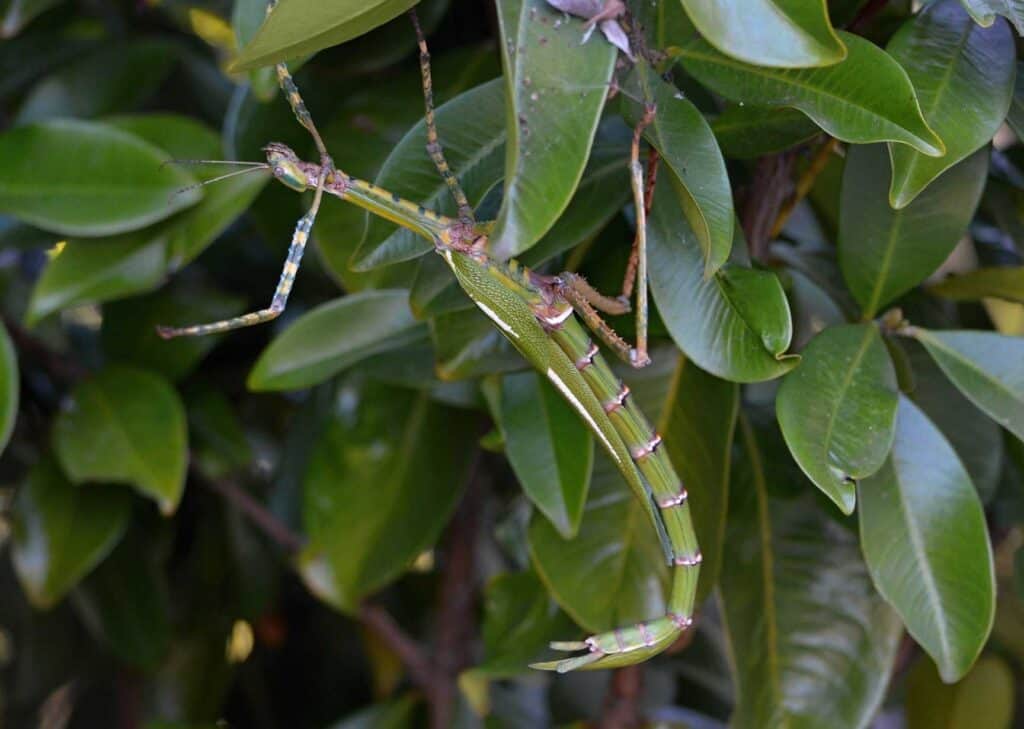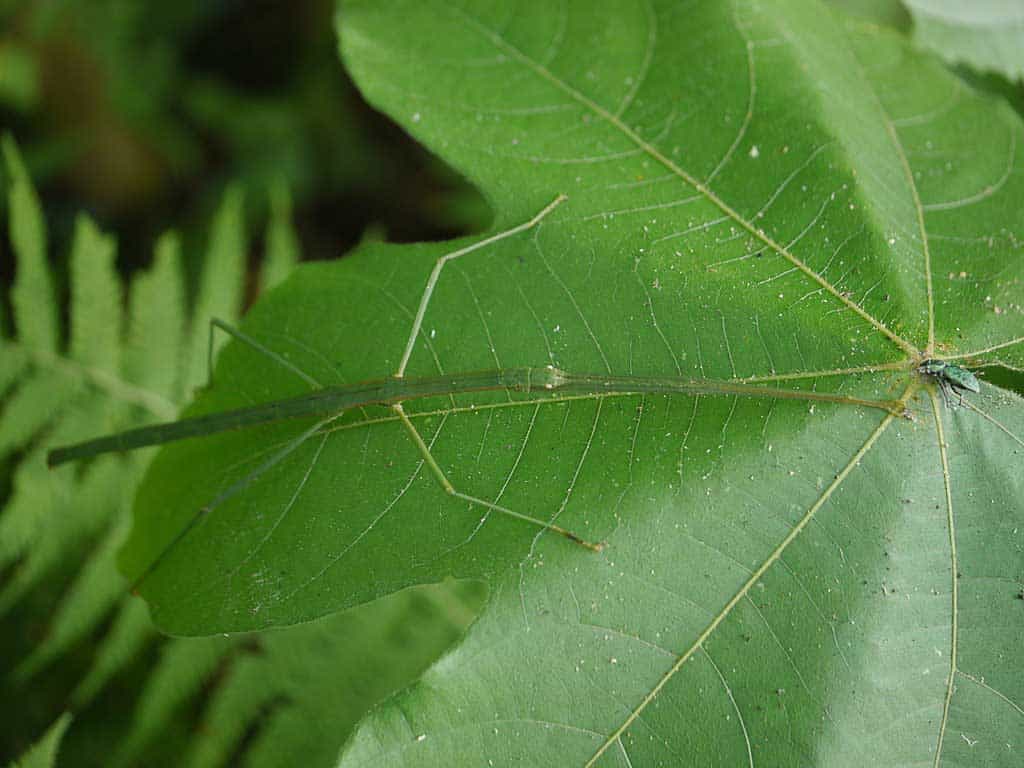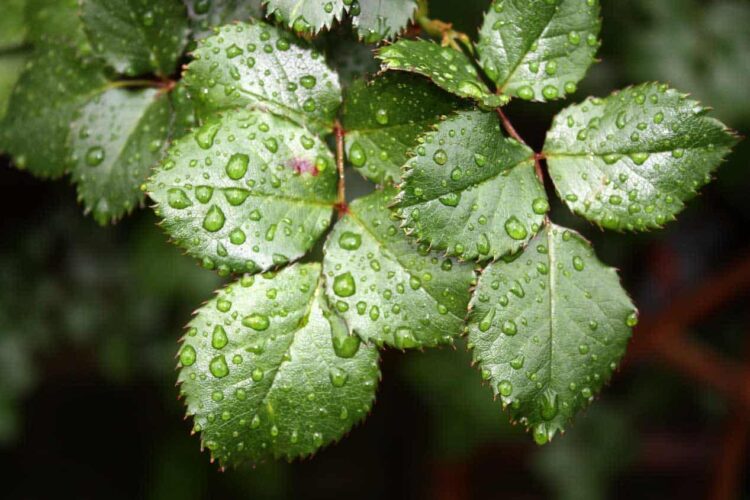Table of Contents
If you have thought about what do stick insects eat, you need to know that these creatures are actually very easy to take care of. As herbivores, they eat plants, and fortunately stick insects eat a whole host of different leaves. However, some pet owners living in northern climes worry about what they are going to do during the winter months when most of the leaves are gone. To this end, we are going to cover what stick insects eat and what you can do during winter to keep your pet flourishing. In summary though…
and what you can do during winter to keep your pet flourishing. In summary though…
As stick insects are herbivores, they only eat plant matter, and for the most part only leaves. Different species of stick insect eat different types of leaves . The main leaves consumed include privet, bramble, oak, rose, ivy, and holly.
. The main leaves consumed include privet, bramble, oak, rose, ivy, and holly.
For more advice and information on keeping and looking after stick insects, check out my ebook on Amazon click here
(opens in a new tab).

What Do Stick Insects Eat Most Often?
Most stick insect species eat bramble leaves . The bramble plant is abundant in North America and in much of Europe; the good news is that it is not only plentiful but is also available throughout the year.
. The bramble plant is abundant in North America and in much of Europe; the good news is that it is not only plentiful but is also available throughout the year.
Bramble always stays green, so when other food sources are scarce you won’t have to look too far to find food for your pet. Some stick insect owners choose to grow their own bramble bushes to avoid any contamination by insecticides. Following on from this, you should be careful when harvesting bramble from the wild as if it has been sprayed with insecticides, there is the risk that your sticks could become ill or even die.
In terms of bramble, there are a couple of things that you need to know. For example, the majority of the leaves, as long as they are moist, are perfectly edible for any stick insect. But the bramble plant does produce bright green leaves. These young leaves can be toxic to stick insects. Although most stick bugs will simply ignore them anyway, it is best to err on the side of caution.
Allow these younger leaves to mature a little; they will eventually darken in colour and lose their toxicity.
Privet leaves are another favourite, having practically the same characteristics as bramble. These are also available throughout the year and you will not have any difficulties in sourcing them.
As with bramble, a sure way of ensuring that the food source is healthy is to simply grow it yourself.

Eucalyptus Leaves are a Tasty Treat
One treat some species of stick insect loves is eucalyptus . These leaves may be easier to find in some countries than in others. Either way, do not buy any eucalyptus from a garden centre or similar establishments as they almost always spray the plants with insecticide to keep them alive for longer.
. These leaves may be easier to find in some countries than in others. Either way, do not buy any eucalyptus from a garden centre or similar establishments as they almost always spray the plants with insecticide to keep them alive for longer.
When considering eucalyptus leaves as your food source for the stick insects, you need to make sure that you know how to maintain eucalyptus bunches. The most important thing to remember is that eucalyptus requires much more water than most other plants. Expect to have to change the water regularly when keeping your eucalyptus bunches in a vase-type container.
Although many types of stick insect eat eucalyptus, there are still species that have particular preferences. For example, the Thailand stick insect favours bramble whereas the stick insects of Australia love eucalyptus.
As with all semi-regular food sources, you need to test how your stick insect reacts to each offering. You can test various plant leaves from your garden as food sources for your sticks. These insects are clever enough to stay away from any leaves that are toxic to them. If you see that the leaves have been damaged, you will know that your stick insects have been eating them.
What Should You Give Your Stick Insects to Eat in the Summer?
I always advise a little variation in your stick insect’s diet. Obviously, you want to keep things interesting for them. Another reason is that you may want to preserve your winter food sources so that you do not run into problems at this time of the year.
If you use most of the bramble leaves in your garden in the summer, for example, your bushes might not have a sufficient supply that you can use during the winter. This could present you with the problem of finding food sources elsewhere.
Oak leaves are a favourite summer food source for stick insects. These leaves begin to burst out around the middle of May (in most northern climes), lasting until the start of autumn, at which time they start to whither, making them inedible to the stick insect. Oak leaves are large and just a few moist leaves can give stick bugs enough food to last for a while.
Hazel leaves are another good alternative during the summer time. They are similar to oak leaves in that they start to turn yellow at the start of autumn. Stick insects are picky and will not eat anything other than green, moist leaves.
Finally, a good treat for stick insects in the summer are the leaves from rose bushes. Any stick insect that likes bramble will also consume rose leaves. The only problem is that rose bushes do not produce substantial numbers of leaves, and they may be difficult to find if you live in certain areas.
Again, do not buy any rose leaves from a garden centre as they will always have insecticides on them that will harm your pet.
How Should You Give Food to Your Stick Insect?
You already know that you need to have a consistent supply of food. The next step is to ensure that the food stays moist. Stick insects will not eat leaves that are dry. Leaves naturally start to dry up and turn brown after they have been picked. You can keep them moist with daily misting of the enclosure.
Leaves also provide your stick insects’ supply of water . This obviously means that it is important to ensure that the leaves remain moist or your stick insects could die of dehydration.
. This obviously means that it is important to ensure that the leaves remain moist or your stick insects could die of dehydration.
Ideally, the leaves should be placed in a small container. However, any open container you use for a set of adult stick insects is not suitable for the really young nymphs. They will drown within seconds if they fall in, so it is best to remove that risk entirely. There are a couple of ways to protect nymphs without compromising the freshness of the food.
The simplest DIY method is to use pieces of rolled up paper just above the point the stems/leaves meet the water. You could even stretch some paper over the top of the vase and cut a hole in for the stems. The leaves will be able to ‘drink’ the water while the stick insects will not be able to fall in.
If you want something a tad more advanced, you could purchase a mosquito net. Stretch the mosquito net over the top of the vase. It is the same principle as using the paper but is arguably a little safer for the nymphs.
How Long Should You Leave Food in the Enclosure?
The main objective is keeping the food fresh. Not every type of leaf is going to stay fresh for the same period of time, even if picked at the same time and kept in the same conditions.
Your stick insects should always have a food surplus. They’re not like cats or dogs where they will eat and can then go without food for a few hours before they start to get agitated.
A stick insect can strip a leaf bare incredibly quickly. You’ll usually have to add some extra food every day.
Stick insects will only eat the leaves not the stems, and that applies to leaves picked from a tree or lettuce from your fridge. The more stick insects you have in the cage , the more you will have to replenish the food. It’s that simple.
, the more you will have to replenish the food. It’s that simple.
Take note that if certain leaves are left behind, there is a good chance your species of stick insect simply doesn’t like that food, or it has lost too much of its freshness.
Don’t leave the leaves to rot or assume that your pet will eat it after a while.

Last Word on What Stick Insects Eat
The majority of stick insects will eat things like bramble and rose leaves. But it all depends on the species you have. If you’ve imported an exotic pet, you’ll have to look into where the insect comes from and what it’s used to eating.
Stick insects are picky eaters and will not touch anything that they don’t like, no matter how hungry they are.

